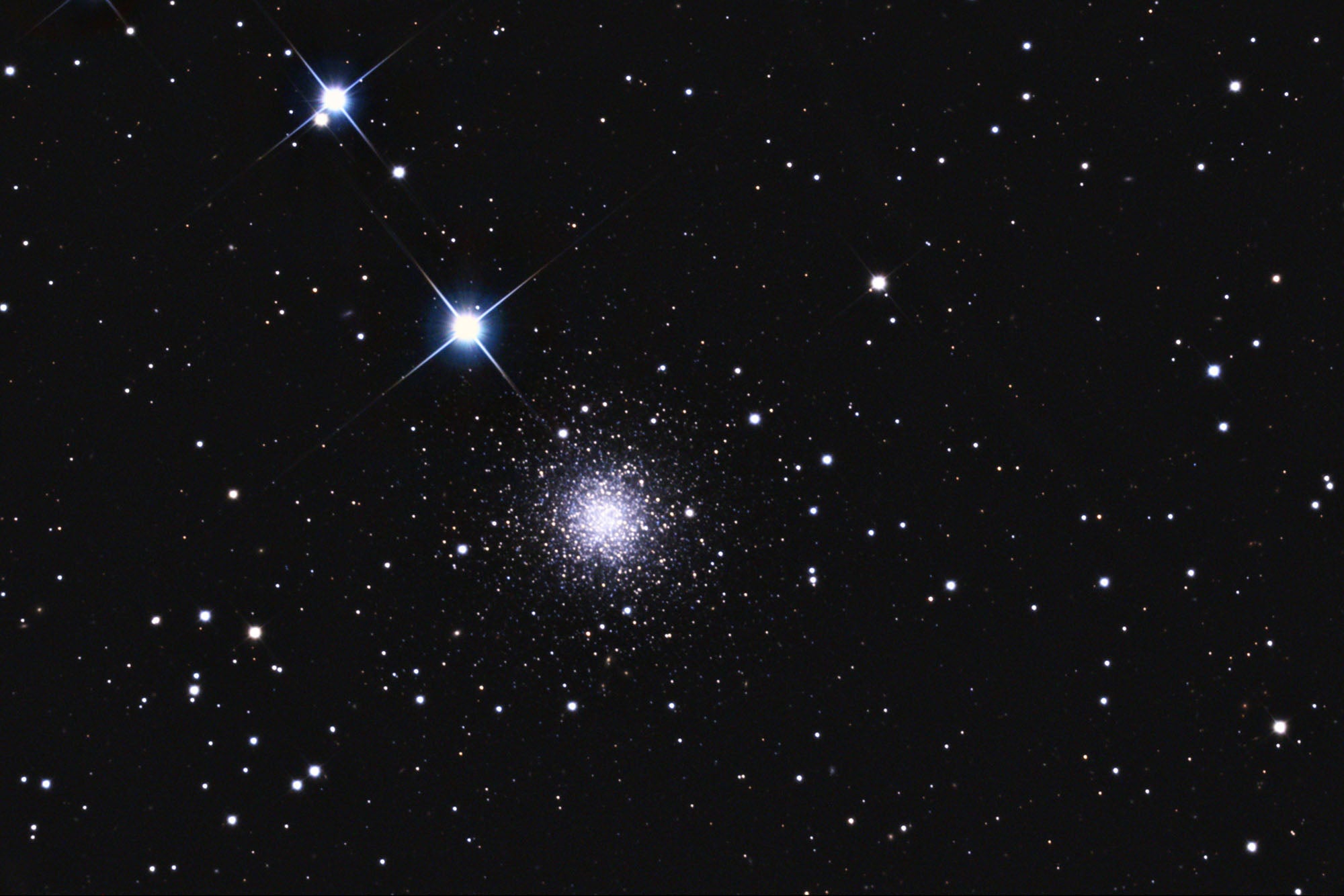
Globular cluster NGC 2419 is an enigma hiding in the dim constellation Lynx, way off the beaten path. While most Milky Way globulars surround the galactic core in Sagittarius, NGC 2419 lies halfway across the sky. On New Year’s Eve 1788, William Herschel first spotted a faint blur of light in Lynx that he described as “considerably bright, round, very gradually much brighter in the middle.” Then, in 1918, American astronomer Harlow Shapley determined that NGC 2419 was 99,000 light-years away, much farther than other known globulars at the time.
NGC 2419 then earned the nickname the Intergalactic Wanderer. Recent estimates nearly triple the distance to 275,000 light-years from Earth and 300,000 light-years from the galactic center. However, technically, it’s not wandering aimlessly in space. Just like the other 150 or so globulars in our galaxy’s collection, NGC 2419 is gravitationally bound to the Milky Way and orbits the galactic core — but with a much higher eccentricity, taking an estimated 3 billion years to complete one trip.
NGC 2419 is unlike many other globulars, whose ancient red stars are all largely the same chemically. Those in NGC 2419 can be divided into two groups based on their composition. One set of stars is much richer in helium than the second set, and is largely gathered in the center of the cluster. The groups vary in abundance of other elements as well, notably nitrogen. These inconsistencies seem to show that NGC 2419 was formed in not one, but two distinct stages that remain a mystery.









